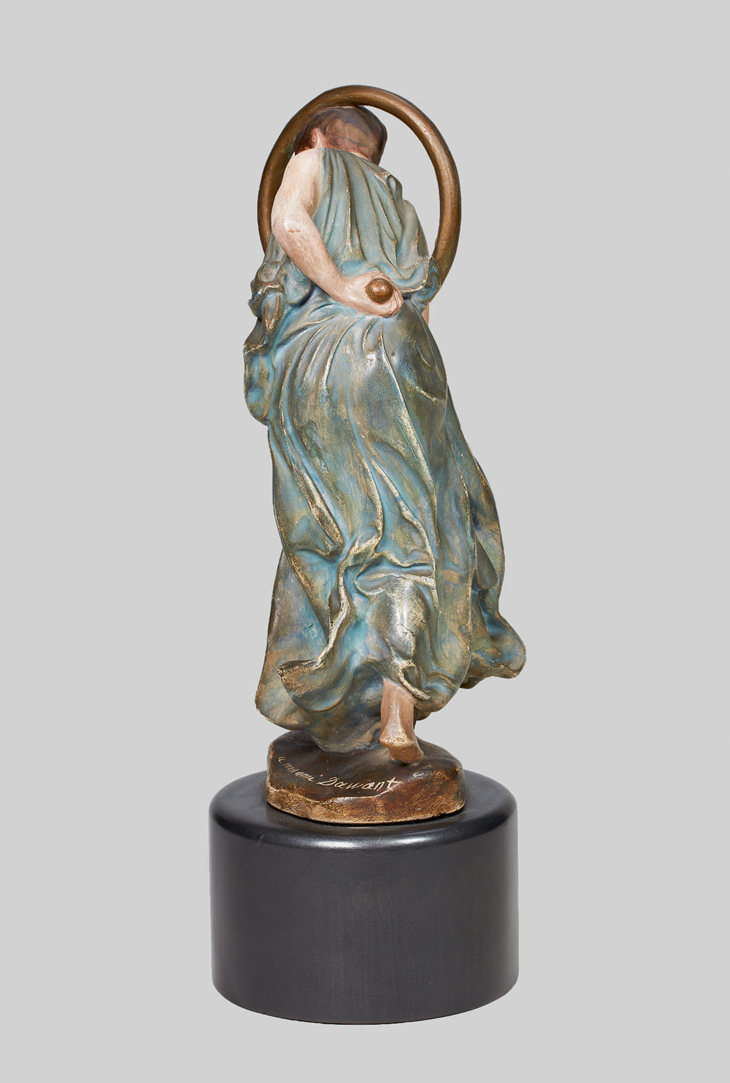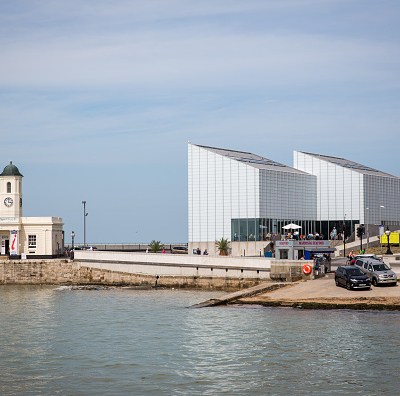Neatly coinciding with the Met Breuer’s blockbuster exhibition ‘Like Life: Sculpture, Colour and the Body (1300–Now)’ (until 22 July) comes Jean-Léon Gérôme’s diminutive statuette La Joueuse de Cerceau (The Hoop Dancer), lot 2 of Sotheby’s 22 May sale of European Art in New York. While Gérôme’s Seated Woman (c. 1890/95) or Corinth (1903–04), both in the Met exhibition, see the French artist transforming marble into apparently soft and pliant flesh through the use of naturalistic wax tints, the auction presents a rare polychromed plaster that serves a quite different purpose.
Here the artist is not so much breathing life into painted or sculpted flesh as reinventing for the modern age the mass-produced figurines of antiquity. His inspiration was the discovery in the 1870s of an immense hoard of ancient terracotta figurines dating from the 4th century BC at Tanagra in Boeotia, Greece. Some of these terracottas retained traces of their original polychromy and provided evidence in support of the then (and for some, still) shocking theory that the ancients had painted their sculptures.
La Joueuse de Cerceau (The Hoop Dancer) (1891), Jean-Léon Gérôme. Courtesy Sotheby’s

These mould-cast Tanagra figures evolved out of an earlier tradition of making sculptures to serve as cult icons or votive objects but these – and others found all around the Mediterranean – are evidently secular domestic artefacts rather than religious sculpture. Their makers mirrored everyday life in their lively depictions of real women in fashionable dress, and particularly seemed to favour dancing girls.
Prior to his Hoop Dancer, Gérôme had already painted Egyptian dancers, delighting in the opportunities they afforded for depicting dynamic poses. He had also made sculptures taken from figures in his paintings, or produced as maquettes for them. The little Hoop Dancer, uniquely, took a bow in both media. She first appears in 1890 in Tanagra, a life-size idealised nude woman holding in her outstretched hand the twirling figure, who gracefully dips her head into a golden ring clutched in her right hand and cups a golden ball in the other, as her drapery swirls around her. Three years later, Gérôme painted his Painting Breathes Life into Sculpture (Sculpturae vitam insufflate pictureae), a genre scene depicting a young artisan in an ancient workshop, sitting and colouring an edition of 12 Hoop Dancers in various brilliant hues – a tongue-in-cheek advertisement, perhaps, made to promote the figurines that he was offering for sale in two different sizes and a variety of media through his dealer and father-in-law Adolphe Goupil. The Hoop Dancer would be Gérôme’s most popular and widely reproduced sculpture.
In Painting Breathes Life into Sculpture (Sculpturae vitam insufflate picturae) (1893), Jean-Léon Gérôme. Art Gallery of Ontario. Photo: leo.jeje/Flickr (used under Creative Commons licence [CC BY 2.0])

The European Art sale takes place at Sotheby’s, New York, on 22 May.



